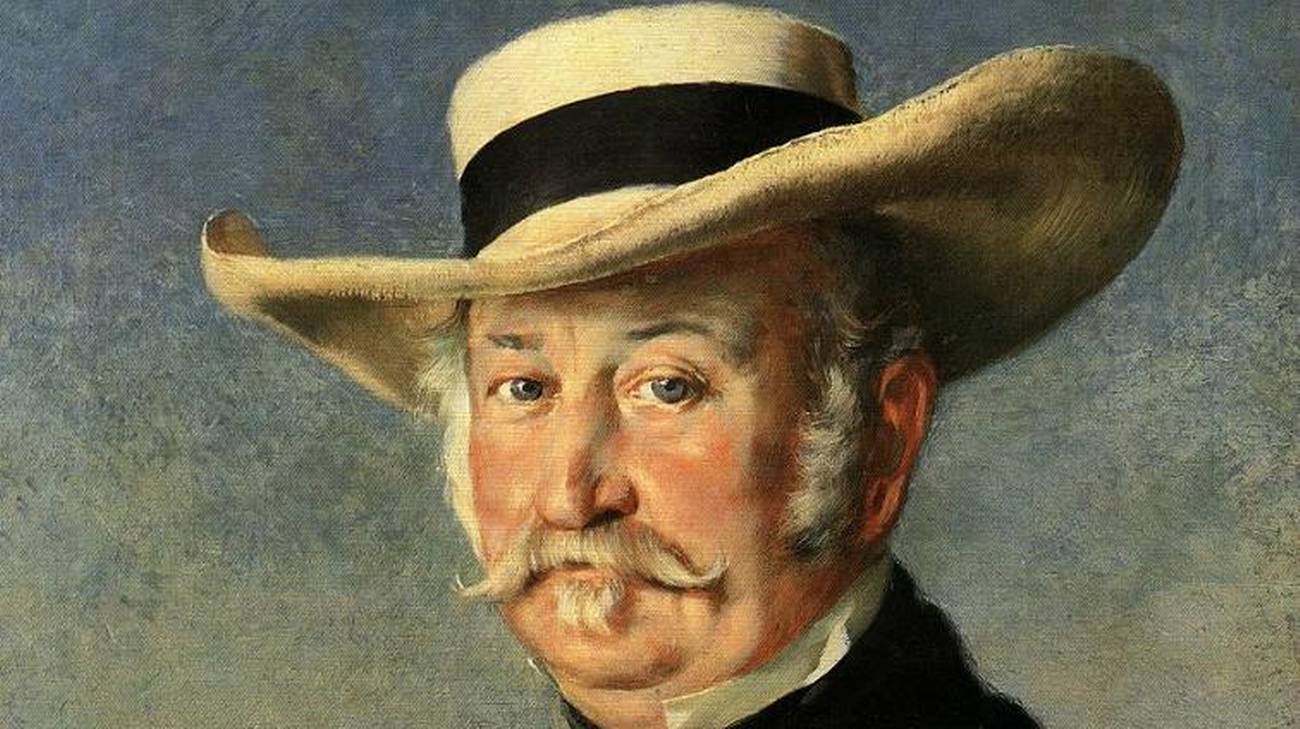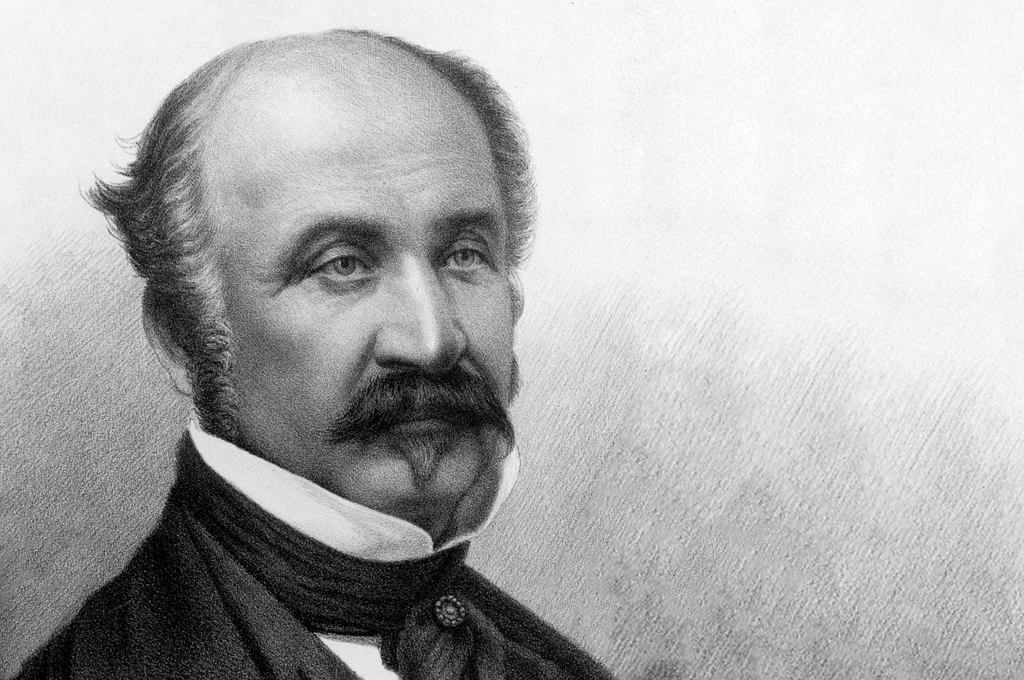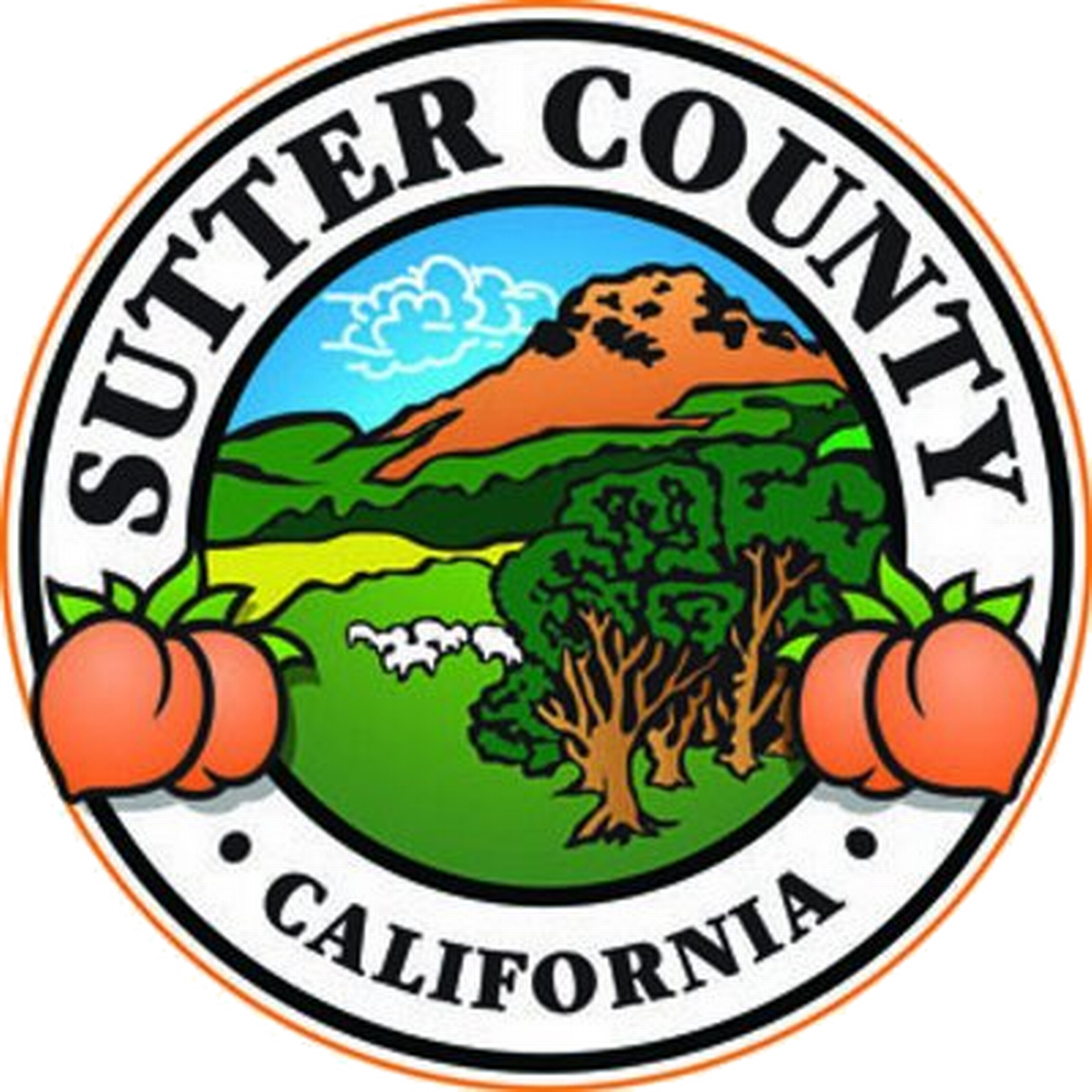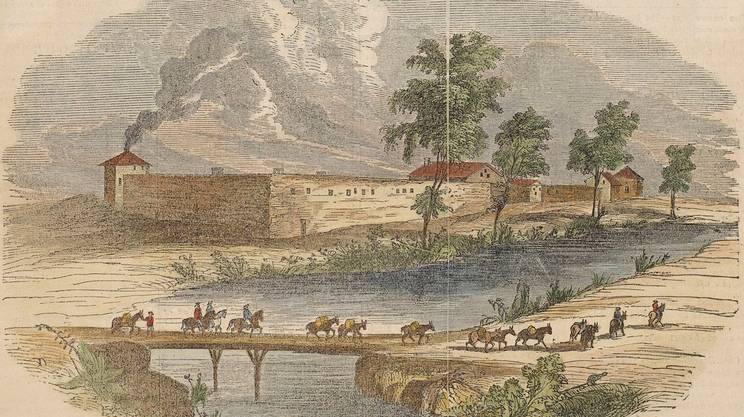John Sutter: a Swiss with a dark side in the Wild West

Before it became Sacramento, the present-day capital of California was called Sutter’s Fort and then Nueva Helvetia by its founder, a Swiss emigrant named John Sutter. He became famous as a pioneer, adventurer, politician, California landowner, and as a somewhat dubious “hero” of the American frontier. This is the first of two articles on Sutter.
Thousands of Swiss travelled to the United States to seek their fortune in the 19th century, founding new communities which are still named after places in Switzerland. In 1803, for example, they founded Nouvelle Vevay (today called New Vevay) in Indiana. New Switzerland in Illinois followed in 1831, and New Glarus, Wisconsin in 1845.

More
John Sutter, the Swiss slave-owner
California was a favoured destination for Swiss leaving their homeland, and in particular for people from the southern region of Ticino. An estimated 27,000 emigrants left for the Golden State between the late 19th– and early 20th centuries to work as dairymen or ranchers, often on land-holdings belonging to compatriots who had preceded them. Many went on to be landowners themselves.
Apart from the gold to be found there, another attractive feature of California was its liberal settlement legislation, notably the Homestead Act. Passed in 1862, it simplified land claims. The major settlements were in the region of San Francisco, along the coastal range and in the central valleys. The mild climate in these areas particularly appealed to wine-makers.

Around the time of the notorious California Gold Rush in 1849, the main pioneer figure there was a German-Swiss named John SutterExternal link. He gave his name to modern-day Sutter CountyExternal link, which lies along the Sacramento River in the Sacramento Valley. In 2020 it had a population of about 100,000.
Flight from Switzerland
There was both a light and a dark side to John Sutter, as modern research has shown. A citizen of Rünenberg (in present-day Basel-Country), he was born in Germany – in Kandern, which at that time belonged to the Margrave of Baden. His birthdate was February 23, 1803, and his baptismal name was given as Johann August Suter. He went to school in Kandern and Saint-Blaise, and did an apprenticeship in the printing works and publishing house of Thurneysen in Basel. Here he was following in the footsteps of his Basel father, Johann Jakob Suter, a foreman at the Heusler paper-mill. He worked as a clerk in a textile shop in Aarburg and Burgdorf, and then entered the Bern militia as a sub-lieutenant.
In 1826 he married Anna Dübeld, the daughter of a prosperous merchant, and they had five children. But Suter abandoned his family in May 1834 after a bankruptcy. To avoid his creditors, he decided to take off for the US. On arriving there he started to call himself Captain John Augustus Sutter. He tried to establish himself as a businessman in Missouri between 1834 and 1838. During this time, with no scruples, he engaged in the illegal trade in horses along the Western frontier.
In 1838, faced with mounting debts and a scheduled appearance before an appeal court in Jackson County, he fled again. Following the Oregon Trail, Sutter reached Fort Vancouver (now Portland, Oregon). After sea voyages to Hawaii and Alaska, he arrived in 1839 in San Francisco Bay, California, which at the time was ruled by Mexico, but coveted by American settlers.
The Mexican governor, Juan Batista Alvarado, awarded Sutter a permit to settle in Sacramento Valley and, in two grants dated 1839 and 1840, to farm some 200km2 of land. Alvarado went further, appointing Sutter as a government representative and magistrate on the northern frontier. His mission was to put a stop to the large-scale horse rustling being perpetrated by white bandits and by Native Americans deprived of their lands.
The discovery of gold on his property
John Sutter built a fort on his lands – named after himself – which became the economic heart of the first permanent European settlement in Central Valley, California. The fort was a two-storey building erected between 1841 and 1843. Today it is the sole original building left at Sutter’s Fort State Historic ParkExternal link.

In this very place, on January 28, 1848, an employee of Sutter’s named James MarshallExternal link met his boss privately to show him the gold he had found during the building of his sawmill next to the American River just four days earlier. This discussion led to the landowner leaving his fort (and the colony) for Sutter’s Mill, which he also owned. The fort building was abandoned.
In 1891, an association called Native Sons of the Golden West bought and rebuilt Sutter’s Fort after the city of Sacramento had decided to demolish it. This association still exists; its mission is to preserve pioneer sites in California.
‘Part Two: A Shattered Myth’ will be published on June 28.
Translated from Italian by Terence MacNamee

In compliance with the JTI standards
More: SWI swissinfo.ch certified by the Journalism Trust Initiative







You can find an overview of ongoing debates with our journalists here . Please join us!
If you want to start a conversation about a topic raised in this article or want to report factual errors, email us at english@swissinfo.ch.